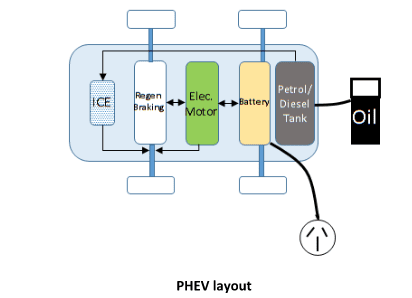
Plug-in Hybrid Electric Vehicles (PHEV) generally have a smaller internal combustion engine (ICE) and a larger battery than a hybrid electric vehicle, which means that a proportion of the car’s travels is capable of being done by battery alone.
The battery in a PHEV can be recharged in up to three ways.
- From a power point/EVSE,
- from the ICE directly (acting as a generator) and
- and through regenerative braking. Therefore PHEVs can refuel either from a fuel bowser or a power point/EVSE.
Note: some PHEV variants exist with larger ICE motors and smaller batteries and offer only 15 – 30km only range as a battery electric vehicle (BEV).
Australia has quite a number of PHEVs available, both new and second-hand.
Examples include: BMWi3 Rex (180km battery range), Holden Volt (80km battery range), Mitsubishi Outlander (50km battery range), BMWi8 (24km battery range).

Bryce Gaton is an expert on electric vehicles and contributor for The Driven and Renew Economy. He has been working in the EV sector since 2008 and is currently working as EV electrical safety trainer/supervisor for the University of Melbourne. He also provides support for the EV Transition to business, government and the public through his EV Transition consultancy EVchoice.
